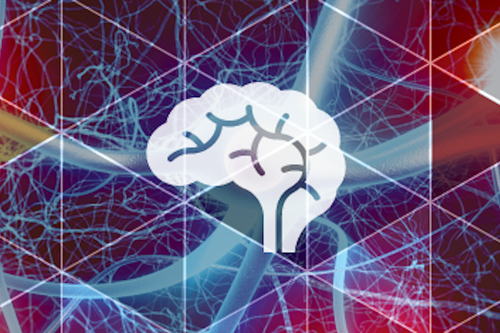
In a first-of-its-kind study, researchers at the University of Minnesota Medical School found non-invasive brain stimulation could be a safe, feasible intervention for improving coordination and motor skills in children with cerebral palsy (CP). It is the first time researchers have ever studied this combined intervention for cerebral palsy.
Findings from the pilot study were published this month in the European Journal of Pediatric Neurology, suggesting a broader study is warranted to fully understand the promise of this intervention becoming a future clinical therapy.
“We’ve seen how non-invasive brain stimulation can transform lives and produce significant results for people with other neurological conditions with little to no side-effects. We wanted to explore the option for children with cerebral palsy,” said lead author Bernadette Gillick, Ph.D., P.T., assistant professor in the Medical School’s Division of Physical Therapy. “Our aim is to advance early intervention options to help these children manage their condition, improve their quality of life and thrive.”
According to the Centers for Disease Control and Prevention (CDC), CP is the most common motor disability in children. The condition can vary greatly – a little more than half of children with CP can walk on their own, but others may require wheelchairs or walking assistance. Estimates from the CDC suggest that lifetime cost of care for one individual with CP is over $1 million.
Dr. Gillick’s team examined the impact of transcranial direct current stimulation (tDCS), a form of neuromodulation (brain stimulation). tDCS uses a low-level electrical current positioned externally on the scalp to target areas of the brain.
The study examined tDCS in combination with intensive hand rehabilitation, focused on strengthening the weaker side of the body. The study group was small – just 20 patients between the ages of 7 and 21. Half the patients received tDCS with intensive rehabilitation, and the other half received only intensive rehabilitation. Both showed improvement, but there were not significant differences. However, Gillick says the results are still quite promising.
“We saw improvement in both study groups,” Gillick said. “But what was most interesting was that children whose brains retained connections to their weaker hand, showed greater improvement specifically from the added brain stimulation.”
She added those findings suggest it may be feasible to target treatments in the future based on individual brain connectivity. That could help future researchers create more effective interventions for children with CP.
Gillick says most importantly, there were no serious adverse effects during the study or the 6 months of follow-up. They hope this will lay a foundation for designing larger, more comprehensive studies. The end goal-to improve the lives of children with CP.
“Our findings are promising. More research needs to be conducted, but we have an opportunity to influence recovery through means we hadn’t before realized. This has potential to impact function across a child’s entire lifespan,” Gillick said.
Gillick is also a MnDRIVE researcher with multiple trainees supported by MnDRIVE fellowships. MnDRIVE, a partnership between the University, the state of Minnesota and local businesses, has invested in brain science research in Minnesota. Since its creation in 2013, MnDRIVE has helped the state become a leader in neuromodulation including non-invasive forms like the tDCS Gillick’s team studied, as well as deep brain stimulation techniques for other conditions like Parkinson’s Disease.
This study was funded the National Institutes of Health (NIH) Eunice Kennedy Shriver National Institutes of Child Health and Development K01 Award, PI: Gillick, (HD078484-01A1), and in part by Awards UL1 TR000114, P41 EB015894 and KL2 TR000113. Funding also included the Cerebral Palsy Foundation, the Foundation for Physical Therapy Magistro Family Grant, and Minnesota’s Discovery, Research and Innovation Economy (MnDRIVE) awards.
- Categories:
- Health




